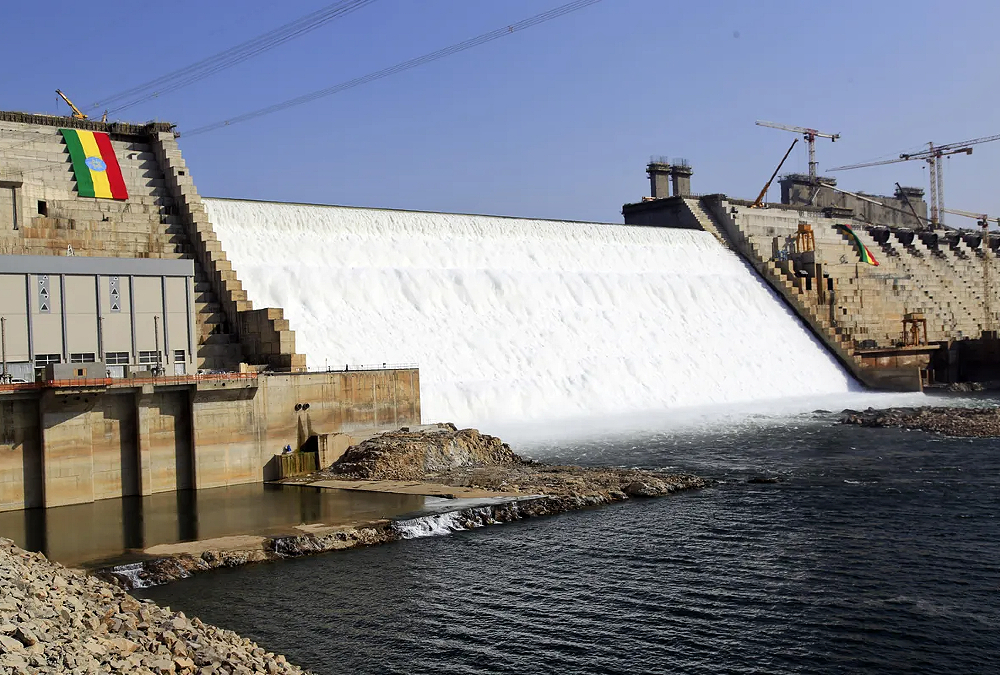Opinion
Ethiopia’s Grand Renaissance Dam: A Monument to Progress Beyond Power


By Zekarias Woldemariam
For Ethiopians, the Grand Ethiopian Renaissance Dam (GERD) represents far more than a hydropower project. It embodies a nation’s resolve to harness its natural resources for self-determined development and prosperity.
At its core, the dam is a beacon of hope, offering two critical solutions: a reliable supply of electricity and an end to decades of dependency on external forces to utilize their own assets.
With a capacity to generate over 5,200 megawatts of electricity, the GERD nearly doubles Ethiopia’s current power output. More importantly, it stands as a testament to what can be achieved when a people unite with unwavering determination to transform their socio-economic landscape.
The dam is not just about energy; it symbolizes Ethiopia’s ability – and Africa’s potential – to take control of its destiny by leveraging local knowledge, resources, and collective effort.
The Nile River: A Paradox of Plenty Amidst Poverty
The mention of the Nile often evokes images of abundance – the world’s longest river, teeming with life and history. Yet, for Ethiopians and others along its banks, the reality has long been starkly different.
Despite contributing more than 85 percent of the Nile’s water, Ethiopia has historically faced poverty, drought, and famine while watching downstream nations reap the benefits of this shared resource.
Over the years, successive Ethiopian governments have built dams on smaller rivers across the country, providing affordable energy domestically and even exporting surplus power to neighboring states. However, these efforts paled in comparison to the untapped potential of the mighty Nile.
So why did previous administrations hesitate to build large-scale projects like the GERD? The answer lies in colonial-era agreements that prioritized Egypt and Sudan at Ethiopia’s expense.
Breaking the Chains of Colonial Legacy
The root cause of Ethiopia’s inability to develop the Nile stems from outdated treaties signed during the colonial period. These agreements granted Egypt and Sudan disproportionate rights to the river’s waters, effectively excluding Ethiopia – the primary contributor – from equitable use.
While Ethiopia consistently advocated for fair sharing among all riparian nations, diplomatic obstacles repeatedly blocked attempts to secure funding or technical assistance for Nile-based projects.
Ethiopia, like many African nations, grapples with financial and technical constraints. Historically, infrastructure projects relied heavily on foreign loans or partnerships.
But every time Ethiopia sought such support for Nile-related initiatives, lower riparian countries – Egypt and Sudan – used diplomatic pressure to thwart those efforts. This pattern reinforced a broader issue: a systemic barrier preventing developing nations from utilizing their natural wealth for progress.
Faced with these challenges, Ethiopia had two options: resign itself to perpetual underdevelopment or break free from the chains of neocolonialism.
In 2011, under the leadership of then-Prime Minister Meles Zenawi, Ethiopia chose the latter path. On April 2, construction of the GERD began – a bold declaration of sovereignty encapsulated in Zenawi’s now-famous words: “We are both the owners, financiers, and engineers of the dam.”
A Triumph Born of Unity and Resilience
After 16 years of relentless dedication, marked by delays and cost overruns, the GERD stands complete – a crowning achievement made possible entirely through domestic contributions. Ordinary citizens donated their earnings, diaspora communities rallied global support, and government revenues were redirected to ensure the project’s success.
This monumental feat underscores a powerful message: true liberation comes not from waiting for external aid but from taking decisive action to overcome adversity.
Much like the historic Battle of Adwa in 1896, which shattered myths of white supremacy and colonial invincibility, the completion of the GERD dismantles another dangerous narrative – that loans and foreign assistance are prerequisites for development. Instead, it champions the idea that self-reliance and collective commitment are the keys to breaking free from cycles of poverty and marginalization.
Beyond its role as a source of clean energy, the GERD serves as a rallying cry for Africa and other developing regions. It demonstrates that the continent’s vast natural resources – be it waterways, minerals, or arable land – can drive transformative growth if managed with vision and unity.
By asserting their rights to these resources, African nations can defy lingering colonial mindsets and chart their own course toward sustainable development.
Lessons for Africa: From Resources to Regional Integration
As the GERD ushers in a new era of possibility, its lessons resonate beyond Ethiopia. Across Africa, similar opportunities abound.
For instance, the continent holds approximately 30 percent of the world’s reserves of critical minerals essential for the global transition to clean energy. To maximize economic and environmental benefits, African nations must strengthen their negotiating positions, reject exploitative deals, and prioritize regional cooperation.
Moreover, the launch of the African Continental Free Trade Area (AfCFTA) offers another transformative opportunity. With a combined market of 1.4 billion consumers and a GDP exceeding US$3.4 trillion, AfCFTA could revolutionize intra-African trade and industrialization.
Like the GERD, this initiative demands bold action and unwavering commitment. Africans cannot afford to delay implementation or allow external pressures to dictate terms.
Instead, they must seize this moment to declare economic independence and foster continental integration.
Conclusion: A New Chapter for Ethiopia and Africa
The GERD is more than a dam – it is a symbol of resilience, innovation, and empowerment. It reminds us that no challenge is insurmountable when a people come together with a shared purpose.
For Ethiopia, it marks the dawn of a brighter future powered by clean energy and national pride. For Africa, it serves as a blueprint for how unity, determination, and strategic vision can unlock the continent’s boundless potential.
In building the GERD, Ethiopia has not only illuminated homes but also ignited a movement – a call to action for all Africans to reclaim their agency, defend their resources, and build a legacy of progress for generations to come.
Zekarias Woldemariam serves as the Deputy Editor-in-Chief of the Ethiopian Press Agency. In addition to his work in journalism, he is actively engaged in the rapidly expanding fintech sector across Africa.

